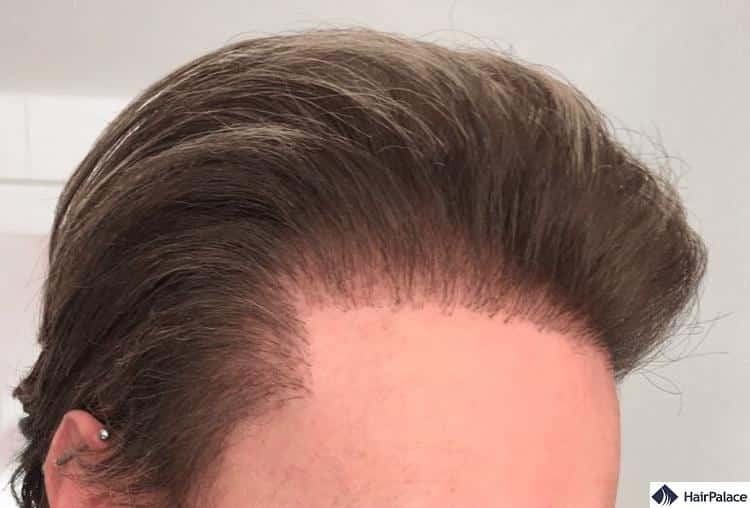Hair Transplant Gone Wrong: A Look at the Biggest Risks
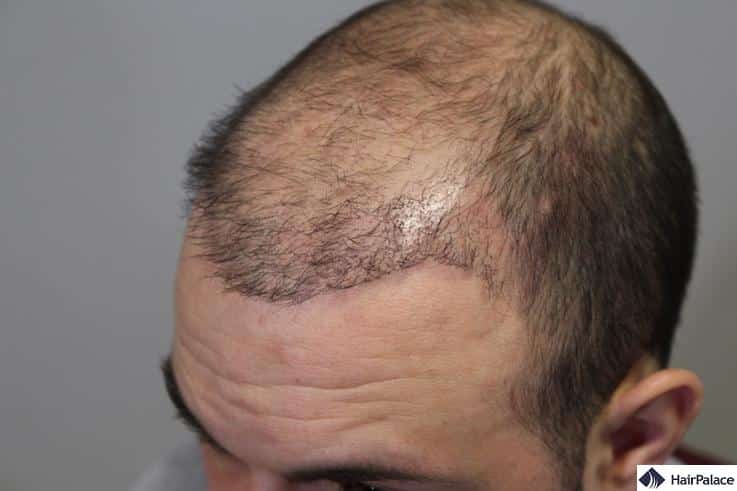
Unfortunately, the rise of illegal, black-market clinics means that bad hair transplants are becoming a real problem for patients to consider.
Lured by fantastic results but at lower prices, patients who visit these clinics may suffer from scarring, infections, and poor results.
A hair transplant gone wrong can result in unnatural hairlines, visible scarring, or poor hair growth due to improper surgical techniques and inexperienced surgeons.
So if you’re interested in hair transplantation, how do you know which clinic is legit?
And how can you tell if you’ve received bad treatment? As always, we’re here to help.
- Can hair transplants go wrong?
- 6 signs of a bad hair transplant
- Botched celebrity hair transplants
- Turkey hair transplant gone wrong
- Botched hair transplant causes
- Failed hair transplant occurrence rate
- Treatment
Can hair transplants go wrong?
Despite hair transplants being highly advanced, cutting-edge treatments, like any medical procedure, they carry risks and potential complications.
Sometimes, a botched transplant can go wrong, leaving the scalp worse off than before. Common reasons that contribute to a poor transplant include:
- A clinic using outdated equipment and techniques
- Poor communication leading up to and following your procedure
- Poor use of anaesthesia during hair restoration surgery
- Neglectful aftercare and poor advice
- False promises and overselling results
- Poorly trained medical staff
The rise in lousy hair transplants has not gone unnoticed within the industry.
Organizations such as the International Society of Hair Restoration Surgeons (ISHRS) cite illegal clinics as one of the main culprits in these worrying results.
These clinics are often found in overseas countries with little to no regulations.
They use Google paid ads with sophisticated websites ranking high in searches to mislead patients into thinking they’re legitimate. They may also falsify customer testimonials and staff qualifications.
Sometimes, “surgeons” have no medical training whatsoever, and can be anyone from cleaners to taxi drivers who are simply looking to make a quick profit.
It also must be said that hair transplants can go wrong even at trustworthy clinics. Sometimes it’s because a patient has not followed proper aftercare advice or suffered an unexpected complication.
6 Signs of a bad hair transplant
1. Scarring
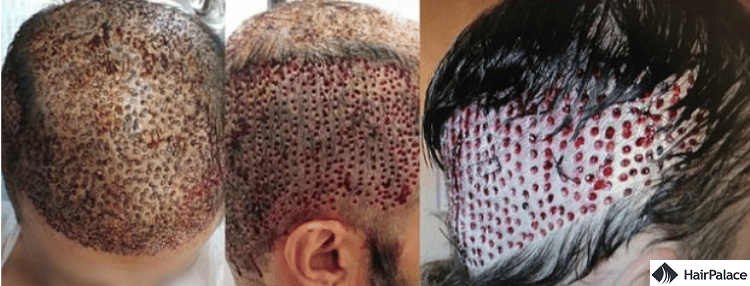
Scarring can be one of the most common (and noticeable) signs of a bad hair transplant. This is primarily due to a poorly trained surgeon using outdated techniques or not using modern equipment.
Scars not only ruin the hair transplant’s overall look but can also prevent hair from growing there permanently.
While UK and EU clinics follow safety guidelines and promise minimal scarring, overseas clinics often try to cut costs by sacrificing basic patient care.
2. Unnatural-looking hairline
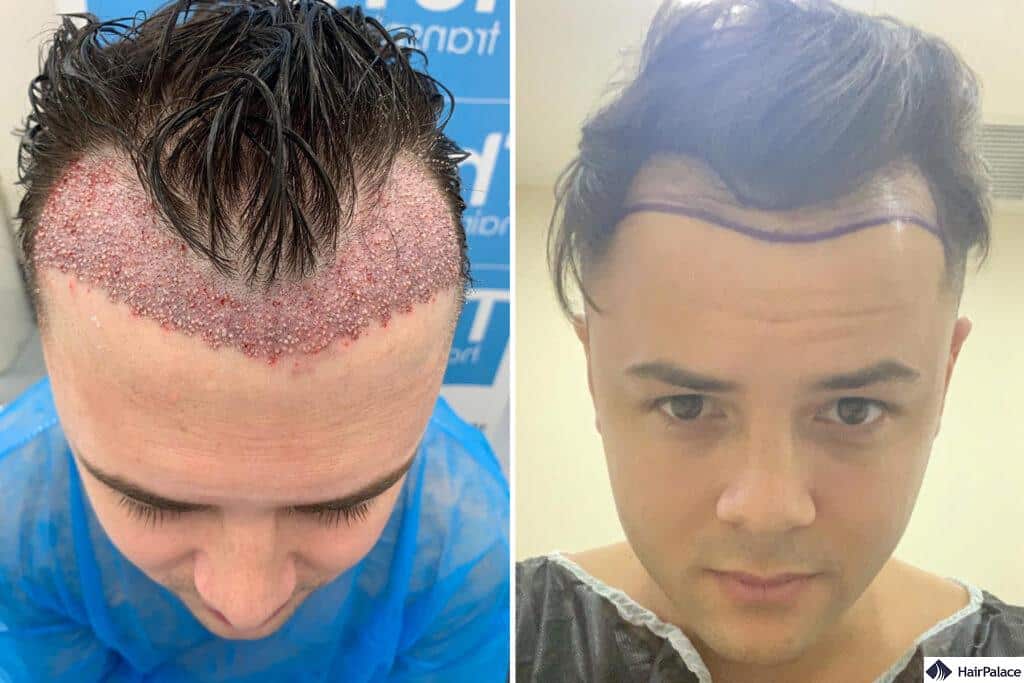
The main goal of a hair transplant is to reconstruct a natural, healthy-looking hairline. Only an experienced surgeon can position implanted hair in such a way to achieve this.
Quite often, they will plan and draw the hairline before the procedure to give patients an idea of what to expect.
On the other hand, surgeons without medical training and experience from unlicensed clinics will be unable to implant hair properly.
The hairline will look artificial, often reveal scars, and ultimately be unflattering for the patient.
3. Scalp necrosis
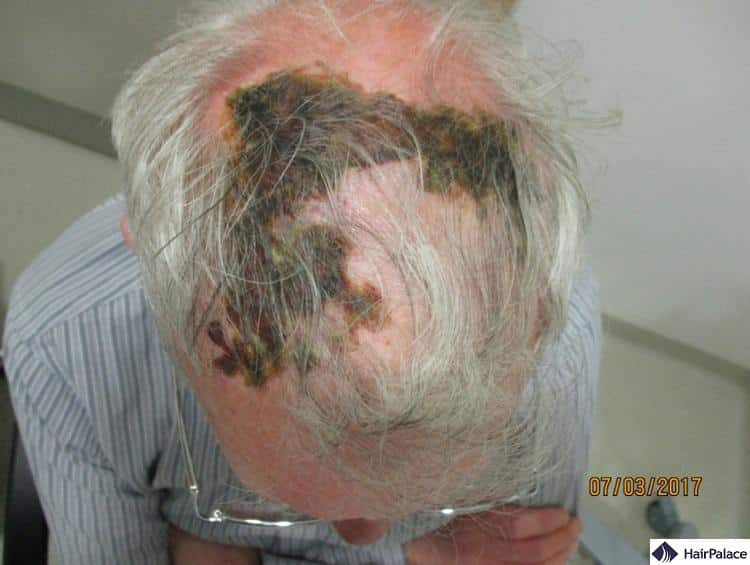
From the pictures alone, you can see that the signs and symptoms of scalp necrosis are extreme.
This is when skin tissue dies and darkens in colour.
The leading causes include:
- Improper hair graft placement
- Mega-sessions, i.e., when more than 2,500 grafts are implanted in one session
- Physical trauma inflicted during surgery
- Excessive smoking
- Dangerous incisions
Scalp necrosis is one of the most severe botched complications you can suffer from.
For this reason, you should only consider professional doctors for your operation.
4. Poor hair growth
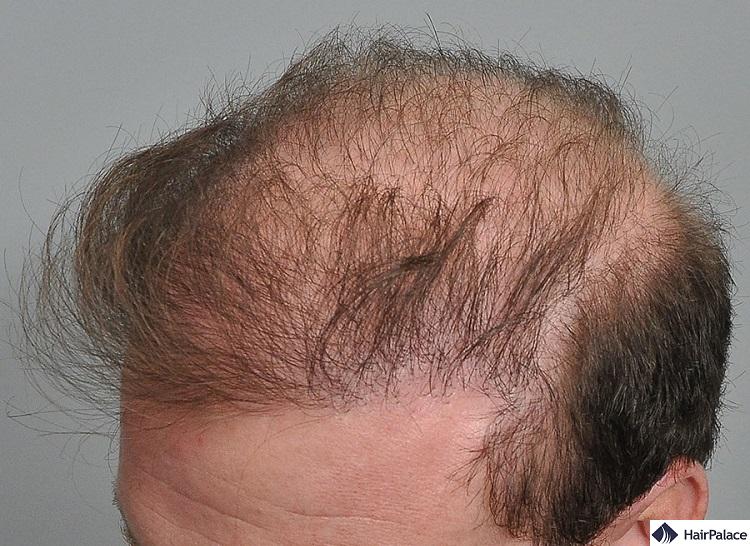
While it is perfectly normal for patients to lose implanted hair following surgery, hair should have regrown within a year.
Any longer, chances are high that you’ve received a bad hair restoration surgery.
Common causes of implanted hair failure include improper techniques during the procedure and improper handling of implants.
Follicles may have become damaged or died during the operation and are incapable of growing new hair.
Another cause for extreme hair loss following your procedure is ineffective aftercare.
While professional hair transplant clinics often arrange follow-up appointments or instructions, black market clinics will not give you the proper advice and care.
5. Scalp infection
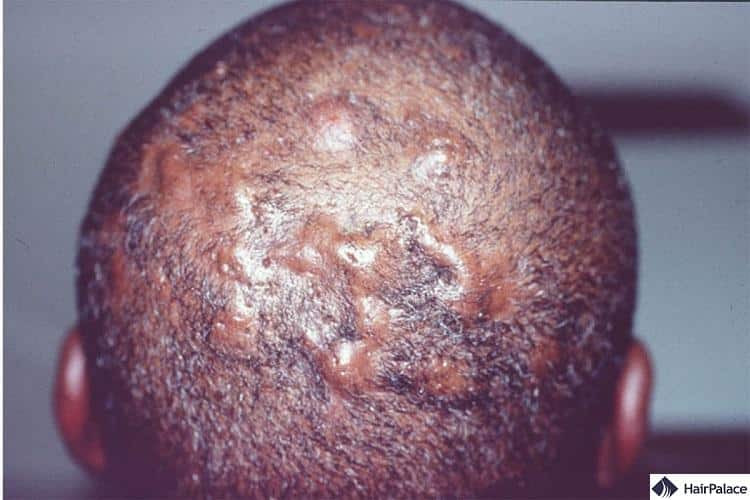
As with any medical procedure, infection often stems from poor hygiene and unsanitary, unsterilized equipment.
They can also arise from dirty work surfaces and treatment rooms.
Although scalp infections are uncommon and only occur in 1-3% of cases, organizations like ISHRS cite poorly regulated clinics as a potential risk factor that may increase these statistics.
Illegal clinics often ignore basic sanitation, increasing risks tremendously versus regulated EU and UK clinics.
6. Formation of cysts
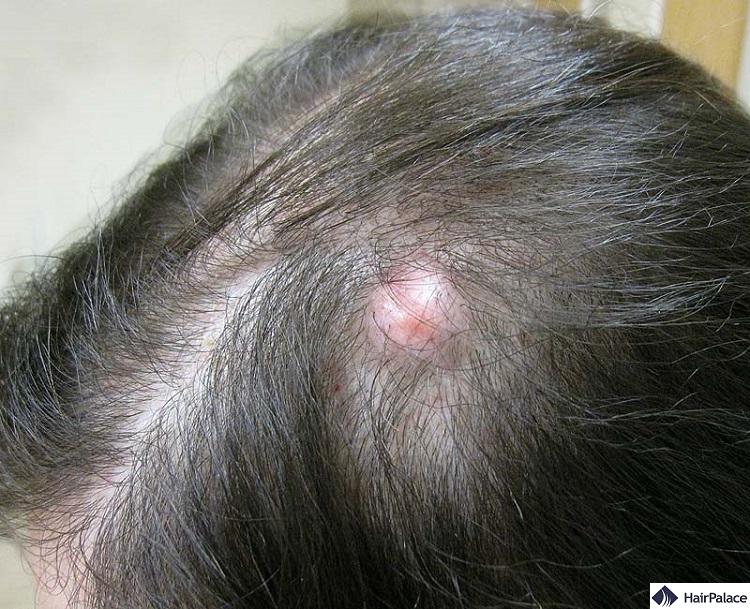
Multiple cysts can be a noticeable and worrying symptom of poor hair restoration surgery.
Ultimately they ruin both the recovery process and the appearance of your operation.
There are many causes for cysts to develop.
A study published in the Indian Journal of Dermatology highlighted improper extraction, blunt equipment, overuse of tumescence fluid, and severe incisions as the root causes.
Celebrity hair transplant gone wrong
In most cases, hair restoration surgery offers a permanent solution to your hair loss concerns.
But the rise of illegal clinics has meant that many people have received subpar procedures that have unfortunately made their hair look worse.
There have even been several well-known celebrities who’ve put their faith in black market clinics and suffered the consequences.
Some well-known examples of a celebrity hair transplant gone wrong:
Turkey hair transplant gone wrong
Turkey is the most popular destination for medical tourism. The low prices, incredible promises and abundance of clinics lead many astray.
You can often find treatment packages for 80% lower than what you would pay in the UK.
However, these savings often come at a far bigger price for your health.
A 2021 survey revealed that all complications reported by BAAPS patients were associated with Turkish hair transplant gone wrong.
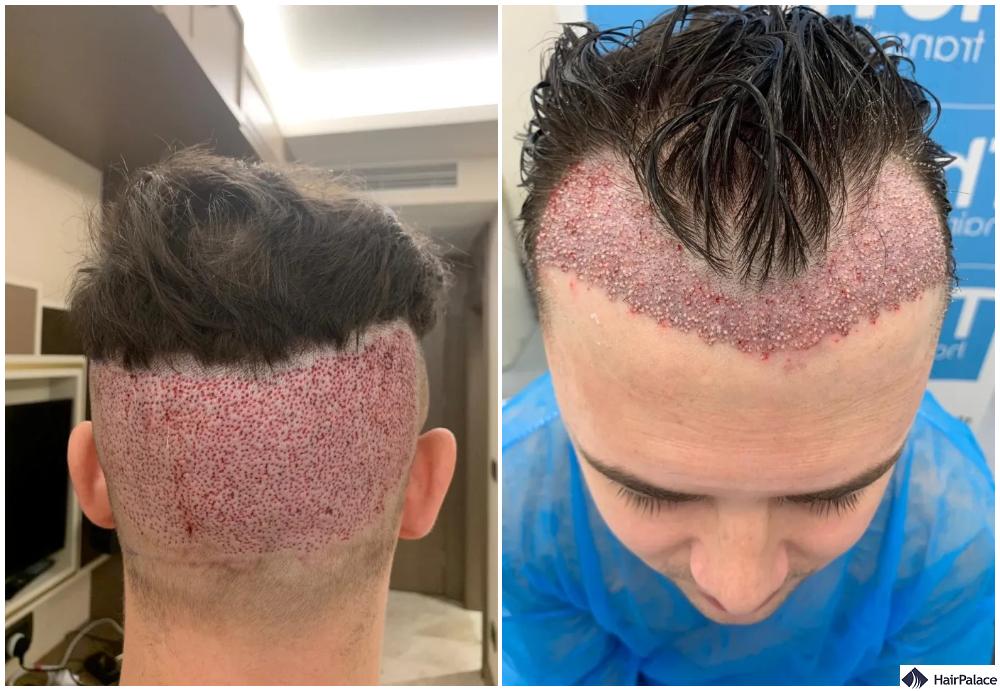
This young British patient paid £1,250 for his hair transplant, which sounds like an excellent deal until you look at the picture above.
The photos show clear signs of a failed hair transplant.
Luke found his clinic through an online ad, which promised excellent results and an all-inclusive package.
Despite the clinic’s claims, Luke was left with permanent scars and a botched hair transplant.
His surgery was carried out by untrained assistants who severely overharvested his donor area, and didn’t even speak English.
Botched hair transplant causes
As we’ve seen, there are many reasons as to why a transplant can fail. Below is a summary of the key reasons:
- Over-harvesting: If too much hair is harvested, you may develop bald or patchy spots on the back and sides of your head. It may also prevent future touch-up procedures.
- No planning: If your surgeon fails to plan your hairline properly and strategically place implanted hair, your transplant will have an unnatural, finished look.
- Inflammation: Implanted hair needs proper oxygen and nutrients to recover and replenish hair follicles. Deep wounds and inflammation may result in poor results.
- Poor technique: Not only does a poor technique lead to uneven results, but it also increases the risk of infection and scarring.
- Low quality of hair: If hair grafts are weak, thin, or damaged during your hair restoration surgery, your transplant will reduce quality, and hair may fall out.
- Poor donor area: Your transplant relies heavily on harvesting high-quality grafts from your own hair supply. But if existing hair is of poor quality, your transplant will be similar.
- No aftercare: Tending to your recovering hair is essential to maximizing results. If your hair transplant clinic does not offer information and instructions, you may open yourself up to scalp infections, scarring, and avoidable complications.
Failed hair transplant: How often does it happen?
In most cases, hair transplant clinics are well-staffed and regulated and uphold the highest patient care and safety standards.
The surgery is safe and quick and provides a permanent solution to your hair loss condition.
Often, if a hair transplant goes wrong, it stems from visiting a poor, illegal clinic overseas.
As many of us are willing to travel abroad for health procedures at a lower price, several suspicious clinics have been set up to take advantage of these new choices.
In these clinics, there is no regard for patient safety or medical standards.
They will use marketing tactics and sophisticated websites to convince you of their legitimacy.
Our advice is to only consider clinics with longstanding reputations within the industry.
Especially if you are opting to travel abroad, research the clinic across different websites, compare staff and their qualifications, and see how each country regulates them.
Only then can you make an informed decision about their suitability and trustworthiness.
What are the treatment options for a hair transplant gone wrong?
If you’re reading this article because you’ve fallen victim to a bad transplant, don’t worry.
There are some choices you can avail of to correct or minimize its effects:
1. Hair transplant revision
Revision hair transplant surgery can correct your transplant if you’ve suffered uneven, misplaced, or unnatural-looking results.
Depending on the scale of your original procedure, e.g., too much hair harvested may involve harvesting donor hair from new areas of your scalp.
2. Hair restoration medications
If your transplant looks thin, patchy, and spare in areas, medications like finasteride or minoxidil can help stimulate hair to grow stronger.
It must be stated, though, that these medications are only temporary, and the results will reverse once you stop taking them.
3. Scalp micropigmentation
This non-surgical procedure creates the illusion of thicker hair.
Scalp micropigmentation is an effective procedure for correcting bald patches and an ideal choice for patients who do not want additional, invasive surgeries.
4. Surgery
You will need surgery for specific complications, such as scalp necrosis.
During the operation, your surgery will be able to remove all dead tissue from your scalp and help prevent further infection from taking fold.
Last medically reviewed on March 24th, 2025
- Nadimi S. Complications with Hair Transplantation. Facial Plast Surg Clin North Am. 2020 May;28(2):225-235. doi: 10.1016/j.fsc.2020.01.003. PMID: 32312509.https://pubmed.ncbi.nlm.nih.gov/32312509/
- Asfour L, Cranwell W, Sinclair R. Male Androgenetic Alopecia. 2023 Jan 25. In: Feingold KR, Anawalt B, Blackman MR, Boyce A, Chrousos G, Corpas E, de Herder WW, Dhatariya K, Dungan K, Hofland J, Kalra S, Kaltsas G, Kapoor N, Koch C, Kopp P, Korbonits M, Kovacs CS, Kuohung W, Laferrère B, Levy M, McGee EA, McLachlan R, New M, Purnell J, Sahay R, Singer F, Sperling MA, Stratakis CA, Trence DL, Wilson DP, editors. Endotext [Internet]. South Dartmouth (MA): MDText.com, Inc.; 2000–. PMID: 25905192.https://pubmed.ncbi.nlm.nih.gov/25905192/
- Garg AK, Garg S. Complications of Hair Transplant Procedures-Causes and Management. Indian J Plast Surg. 2021 Dec 31;54(4):477-482. doi: 10.1055/s-0041-1739255. PMID: 34984088; PMCID: PMC8719980.https://pubmed.ncbi.nlm.nih.gov/34984088/
- Stough DB. The Progressive Loss Risk Scale for Hair Restoration Surgery. Dermatol Surg. 2022 Jul 1;48(7):726-729. doi: 10.1097/DSS.0000000000003453. Epub 2022 Apr 12. PMID: 35412482.https://pubmed.ncbi.nlm.nih.gov/35412482/





